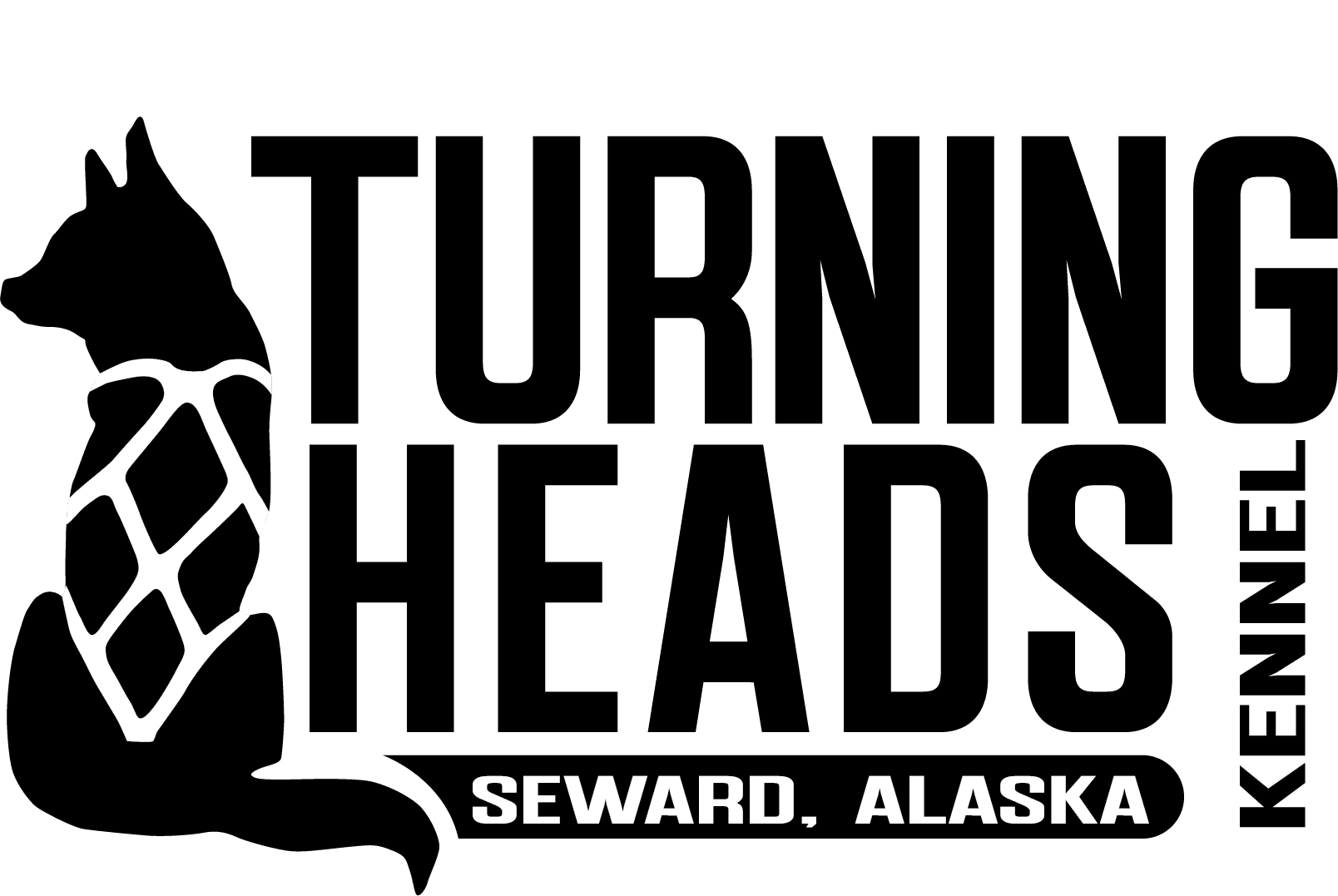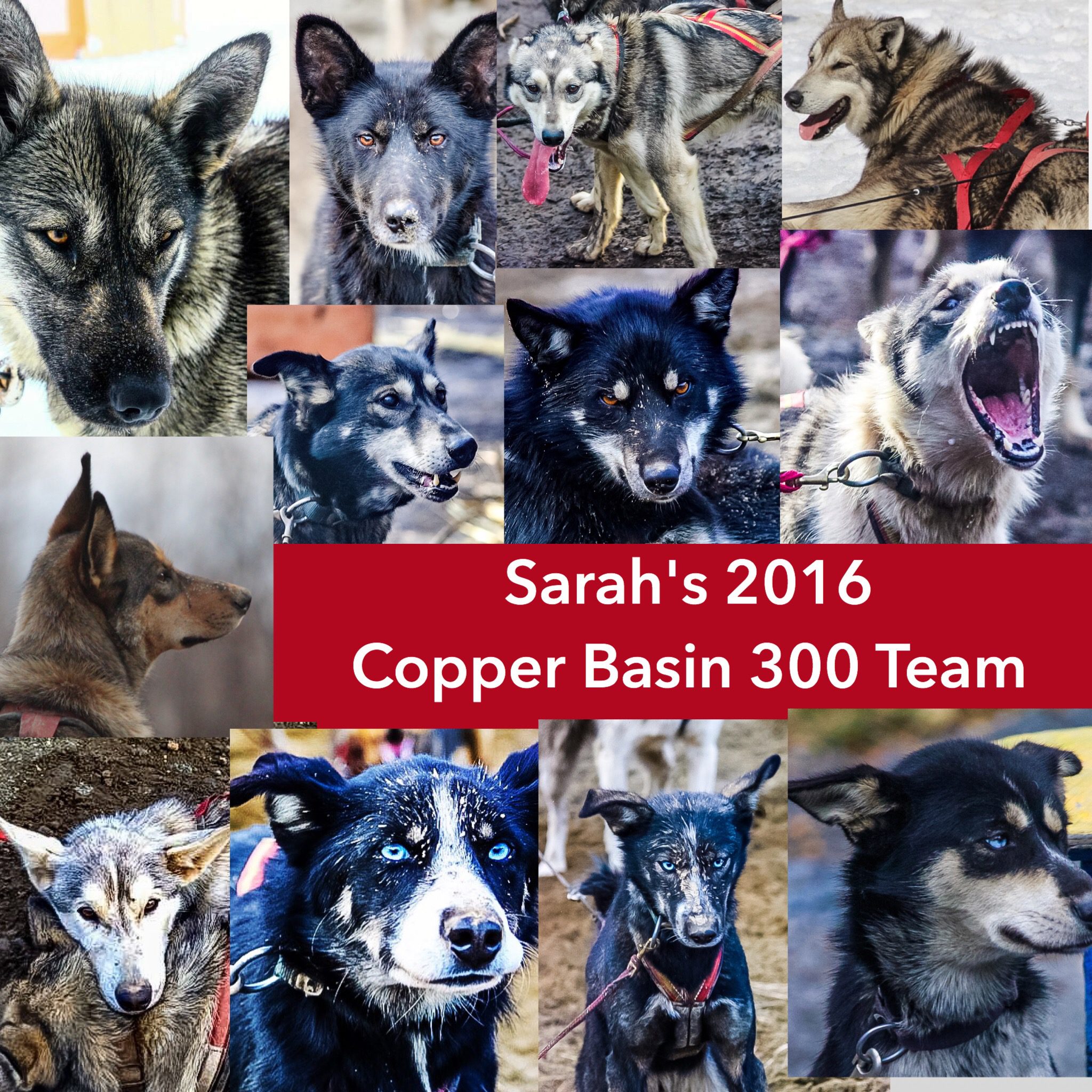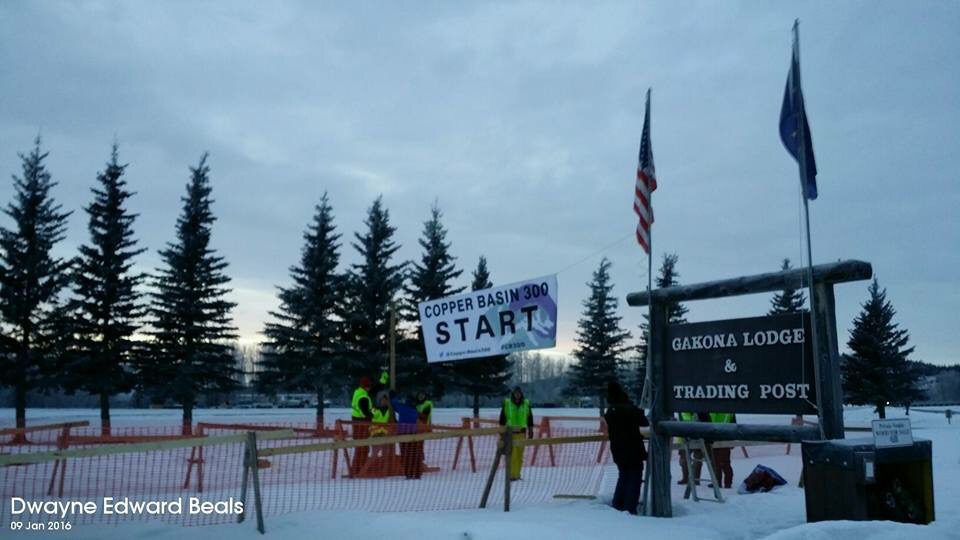This is the 3rd installment in a multi part blog series on the 2016 Copper Basin 300.
Sarah’s 2016 Copper basin 300 team overview
part 1: The Starting Line
Part 2: Chistochina
I pulled hook in Chistochina and found myself dragging the straw my dogs had slept in down the trail. Whoops. That was going to be a hassle for Travis and Dwayne. In the Copper Basin 300, your handling crew is responsible for picking up after you. This means all your straw, trash, even dog poop because all the checkpoints are lodges – it wouldn’t exactly be fair to the lodge owners after their gracious hospitality to leave a huge mess for them.
I glanced back once, before rounding a corner out of the checkpoint and got a quick wave from Travis. As soon as I rounded the bend, I found myself behind Justin and Wyatt, their headlamps two little white beacons in front of me.
The boys love running together and spent much of the race together. My dogs settled in nicely behind them but I knew that they had stronger teams. We’d given them the race dogs, I had the puppies so I was prepared for them to have faster run times as well as a stronger finish then me. That was fine. They had things they needed to learn as mushers, I had things I needed to learn about my puppies.
One of the things I love about mushing is the open trail, not knowing where the next twist or turn will take me. I know that is the same for my dogs. So, as much as I love and appreciate the help we have from Justin and Wyatt, when I found myself stuck behind them I wasn’t exactly thrilled. Instead of seeing the trail, all I could see was Wyatt, and just a bit in front of him, Justin. The darkness that usually envelopes us at night was instead replaced by the glow of their not-so-distant headlamps.
No. I thought to myself. No no no. I could not endure 75 miles of being behind someone else. Where was the open country I craved? I knew if I passed them, they would eventually pass me back. I’d probably sacrifice a little something it of my team but the dogs are like me. They want the open trail. That’s why following another team and can be detrimental: if the two teams aren’t trained exactly the same the second team will try to keep up because, in my opinion, they want to get around and have the freedom of an empty trail in front of them.
So I passed them knowing full well it wouldn’t last but at the very least I would have a little space.
We were in a fun, woodsy section with a few little hills and dips. Our pace was ok but not great and we played leap frog with several teams throughout the run. After an hour, Justin and Wyatt passed me back. I never saw them on the trail again.
At this point, I started getting tired and, truthfully, my memory is rather fuzzy. It’s a good alert to me though that I should get some sort of voice recorder for Iditarod if I hope to do such an extensive blog post series!
Truthfully, this was the run where I learned how to be a fish. Fish can never stop moving as their movement is what keeps water passing through their gills, allowing them to breathe. So fish sleep with half of their brain still awake.
As a musher, when you are in he checkpoint most of your time is spent taking care of the dogs. In the true depths of night, watching my team move down the trail, part of my brain shuts down. I don’t know how to explain it except that I am both aware and unaware all at once. Thoughts do not travel through my brain. There is no real registration of what is or isn’t happening, just a general awareness, a general ability to see the trail, understand what it means in terms of what I must do, and react. Should something significant occur, my brain pops itself back on, Resets itself, but if things are going well and we are moving steady there is just sort of this feeling of being awake but not, being alert but not really with it.
This was the first part of my run. This vagueness of being both awake and asleep, of registering things around me and reacting to them. Cruising on auto-pilot if you will.
At some point, we ended up in what I would call high country. I can’t remember the trail getting to there only that I was became vaguely aware that the trees had faded and we were encapsulated by mountains. Stars tried to shimmer through the hazy clouds and in some open patches of sky they maintained their full radiance.
These were our first hills. Ups and downs. Quiet and beautiful we hummed along. I got off the sled a lot, my feet moving and pushing as I joined in and became a working member of the team. We climbed steadily up and up and then went down and down.
I knew that there was supposed to be one really big climb this run with a false summit. I wondered how far off we were from it and what it would look like.
I knew at this point that I would certainly camp my team and decided that I wanted to rest them after we did the big climb. I knew a lot of mushers were planning to camp before it, in fact I think everyone who did camp camped before it, but I thought it was more beneficial to do after to Teach my dogs to have a little grit and not to worry. If they worked hard, we would rest and recover when they needed.
I hadn’t planned on camping but had plenty of food and bottles of fuel for my cooker. I worried my handlers might get nervous but reminded myself that we all carried trackers so they could see I’d camped.
I saw top dome long before we got to it. There was one lone musher struggling up. At first I thought I had to be mistaken. Were we really going up that? It was a huge mountain. In the dark it loomed before me.
At the base several teams were camped. I debated joining them but hated being stuck by other teams on the trail, especially in difficult sections. If I camped and someone in front of me had problems, it would be difficult to pass on the steep terrain. Getting stuck behind a team going up hill didn’t seem like a good thing to teach my young dogs so it reaffirmed my decision. We would camp after.
As we approached Top Dome I knew it was going to be a battle. It was steep, tall and I had been warned about the false summit. But we started up it and never looked back. Bud, the work horse of the team, earned his spot on the team simply for his performance on this section of trail. I’d drop him in the next checkpoint but he worked hard.
We would go for a bit, climbing and climbing. It seemed like we I found myself getting drenched in sweat and at a lull in the climb we stopped and I took off almost every layer I had on.
We did not move with great speed as we ascended the mountain. But each small step brought us closer and closer to what looked like the top.
When we reached the false summit, we stopped shortly. A quick 5 minute recovery, a brief snack, and a few minutes to take in the valley below. You could see for miles, everything etched in darkness but glimmering with the lightness that winter snow brings. The climb was worth it. It’s always worth it.
We continued up, up, up and finally we were at the top. In front of us was the edge where our descent would begin, I started on my brake early and we began a slow descent. What took us so long to climb took mere minutes, it seemed, to descend. The dogs enjoyed the slow rush that going down hills can bring. We twisted and weaved and eventually came to a long flat section of trail a few miles from the base of Top Dome.
We pulled off to the side to camp. I started my cooker, removed booties, and gave the dogs a meal. I sat on my sled and pulled my parka over my head, waking once when a team went by. Many others passed in the stillness of our camp but the dogs did not stir and neither did I. We woke in the early morning light, Having slept for about 3 hours. We were all groggy, with thatWhat out of sleep haze settled over us. I stretched the dogs, got their booties on, attached their tugs and then we were off.
We had a good run the rest of the trip into Meier’s lake, though it seemed long and we never had much speed. Still, we moved steadily and that was enough. I’d eaten and drank all my snacks by the time we got to the checkpoint due to the unexpected camp but it was worth it.
The dogs came into Meier’s lake happy, with wagging tails. Our checker was Meret, a summertime employee of ours and it was great to see her.
Travis said the team looked great and was impressed with my decision to camp. That praise alone was worth it.
Once we were parked, I got a meal into my team and the vets came by. I was concerned about Crazy as she had lots of diaharrea and they confirmed my fear that she was dehydrated. They suggested dropping her but I intended to stay for 6 hours so asked that they revaluate before I left.
My goal became to get as much water in the team as possible. I fed the dogs, then went into the lodge where Travis had a cheeseburger waiting. I dove in and ate in it big gloshing bites, eager to have the fatty food fill my empty stomach. Then, I went to a room that Travis had rented, curled up on the floor because Justin was in the bed, and fell asleep.
I woke an hour later and watched Justin and Wyatt leave and fed my dogs again. Everyone lapped up the meal. Then more sleep. I slept another half hour, went out and bootied my team and then went inside where I inhaled another cheeseburger.
As I got ready to pull my hook, Bud looked less than thrilled to go and as I took off had a slight hobble.
“Drop him!” Travis shouted at me.I knew Travis was right. I’d gone about 10 feet, set my hooks again, found the necessary paperwork and dropped Bud.
He was too big to carry if he had problems and I could see already the way he held himself that his shoulder was going to be an issue.
Better safe then sorry.
With Bud now removed from the team and heading to the dog truck, we headed off on our run to Sourdough excited about what the new section of trail would bring.
If you enjoyed this post, please consider giving a donation to my Iditarod fundraiser.



